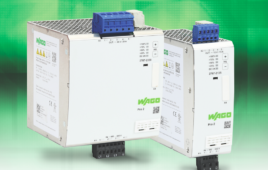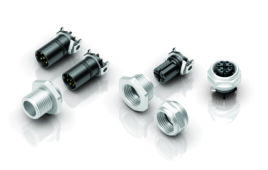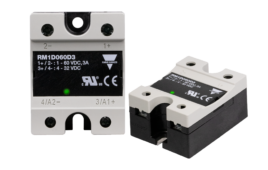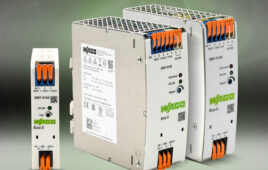The R2100 combines Pepperl+Fuchs’ exclusive Pulse Ranging Technology (PRT) with Ultra-IR LEDs and Multi-Beam Scan. This technology combination delivers two-dimensional measurement over an entire area rather than just one point to ensure precise and reliable distance measurement and detection of irregular surfaces. As a result, it is an ideal solution for challenging indoor and outdoor mobile equipment, intralogistics and machine and plant engineering applications where unique surfaces need to be accurately and reliably detected.
“The R2100 is a revolutionary 2D distance measurement sensor with a host of innovative features that delivers significant and tangible benefits to users,” says Michael Turner, Product Manager – Photoelectric Sensing. ”Multi-Beam Scan eliminates the need for moving parts that over time can break down or wear out. Ultra-IR LEDs deliver an 8 meter operating range without requiring a reflector, and they produce a larger light spot than laser emitters – a distinct advantage when detecting objects with irregular surfaces or textures. Additionally, PRT is the most effective time-of-flight measurement technology available today and provides maximum precision and reliability over large distances and in the harshest ambient conditions.”
Sensors with PRT emit a very short, high-intensity light pulse. They calculate object distance based on the speed-of-light constant and time-of-flight of the reflected light pulse. Unlike other time-of-flight sensors that transmit a continuous light beam, PRT sensors emit short pulses of high-intensity light up to 250,000 times per second. Compared to a continuous source that uses lasers, the energy density of one PRT LED pulse can be up to 1,000 times greater. This allows stable and highly reliable detection, even at distances of 300 meters or more.
In contrast to triangulation-based sensors, the detection range of a PRT sensor is not limited by the geometric layout of the sensor optics. Consequently, PRT sensors with smaller housings can be used for significantly larger detection ranges – providing impeccable measurement quality.
 Pepperl+Fuchs
Pepperl+Fuchs
www.pepperl-fuchs.us
Filed Under: Test & Measurement Tips, Material handling • converting, ELECTRONICS • ELECTRICAL





Tell Us What You Think!